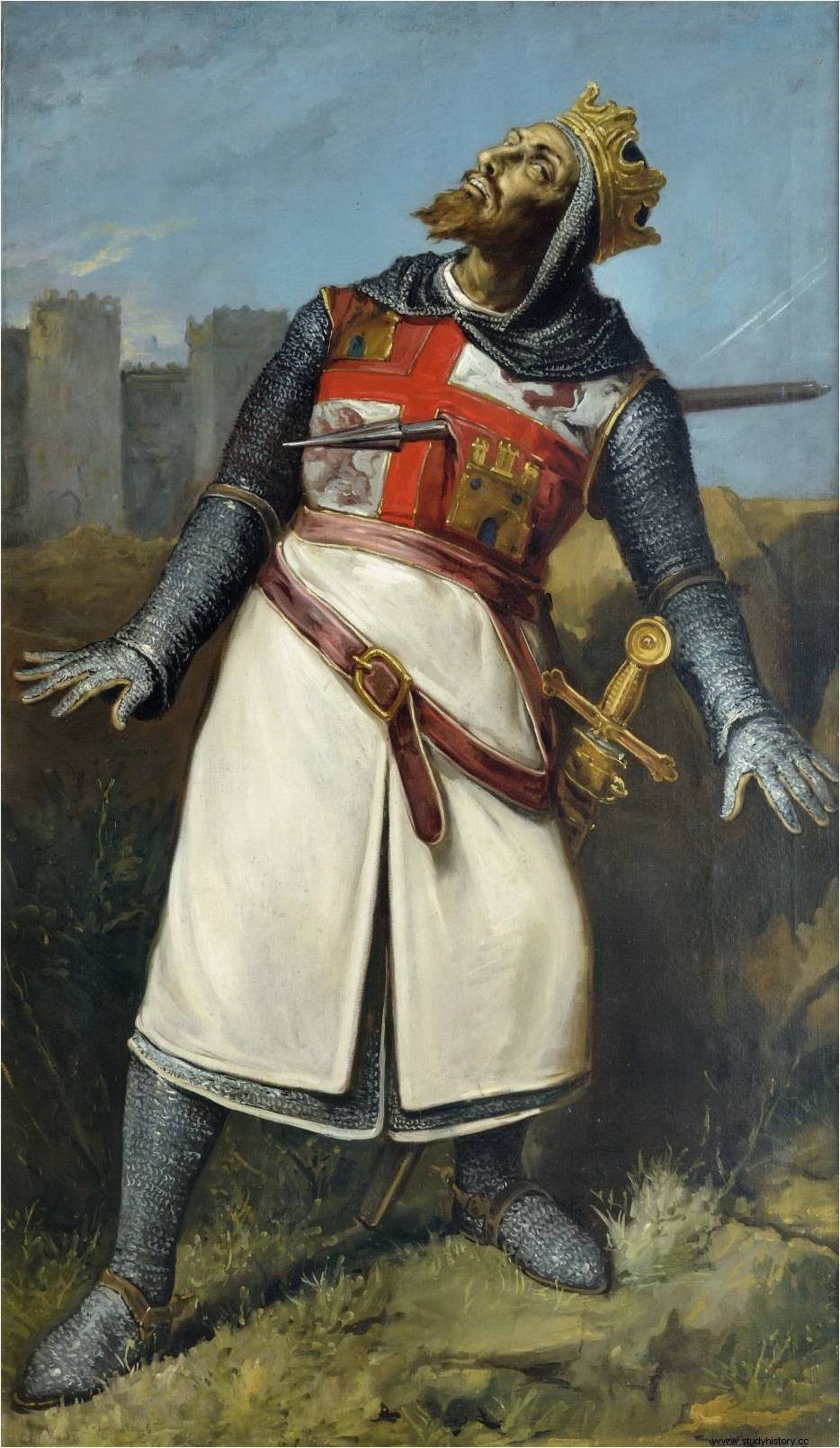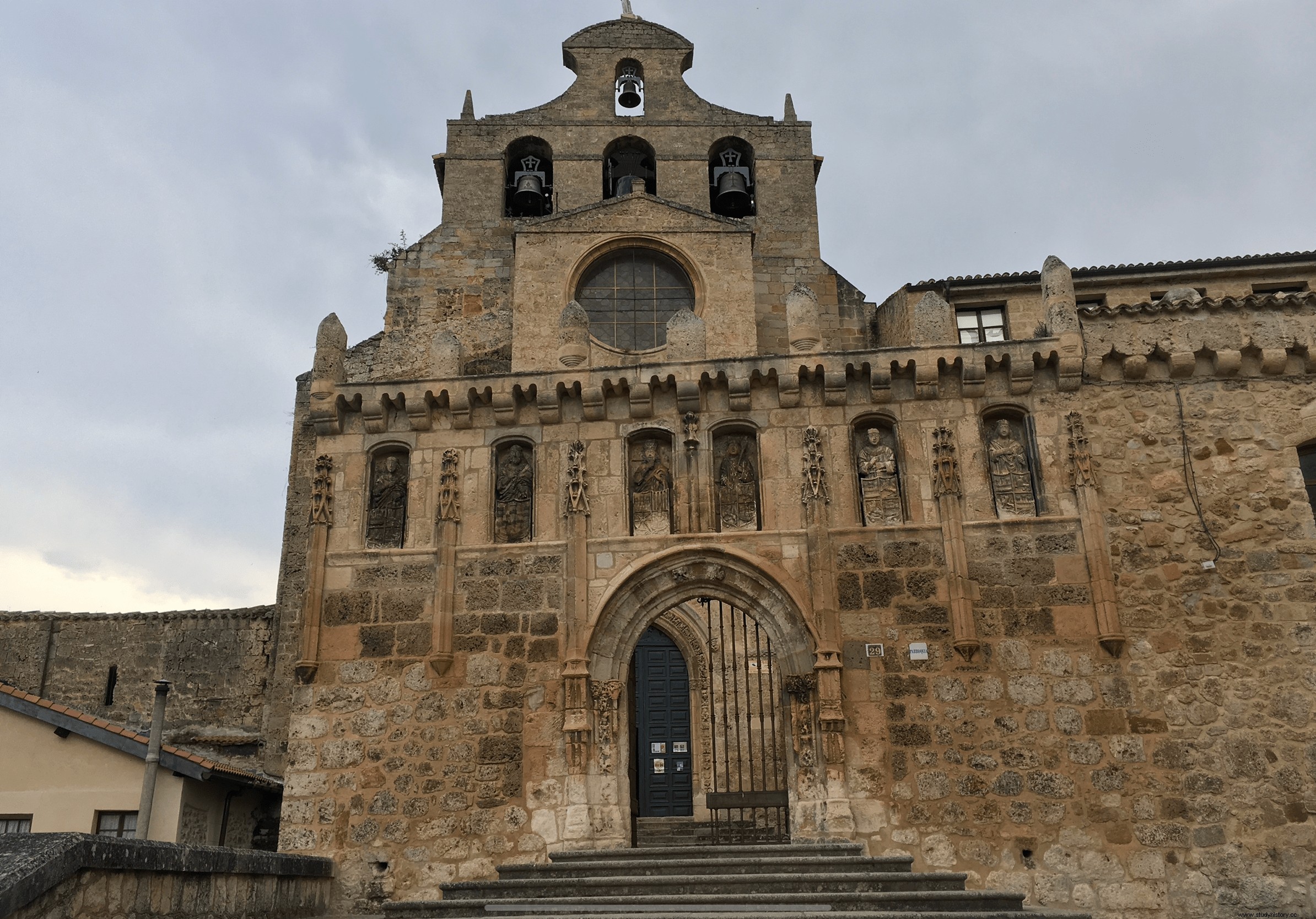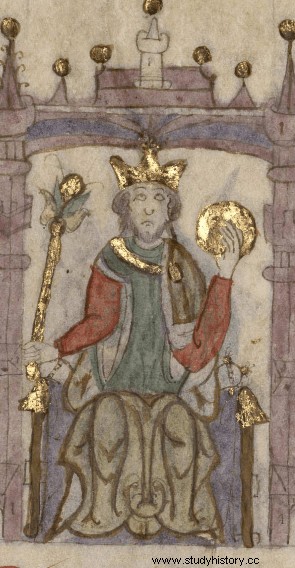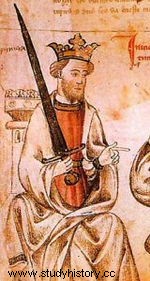One of the obstacles encountered by those who try to approach the history of the medieval peninsular kingdoms is that of the repetition of certain names among the monarchs who wore the crown of these kingdoms or among those who held a county title, which sometimes makes it difficult to identify different characters. In addition, these are protagonists who continually interact with each other and have the bad habit of alternating their names from father to son. His surname does not help us to establish a family nucleus either, since the paternal surname is not inherited, but the name of the father of each king is used as such. Thus, the Count of Castilla García Sánchez succeeds his father, Sancho García, son of García Fernández, son of Fernán González.
And Sancho is precisely one of the names that is most frequently repeated in the peninsular Middle Ages. Two examples serve as a sample:in the year 1065 there was a conflict between the kingdoms of Aragon, Castile and Pamplona that is known as the "war of the three Sanchos" because the monarchs of the three kingdoms involved were Sancho I, Sancho II and Sancho IV, respectively; and in 1157 the king of Castile (Sancho III) agreed with the king of Pamplona (Sancho VI) the marriage of the latter with his sister... named Sancha.
But beyond this reiteration, and as indicated in the title of this post, it is striking that in the kingdom of Castile the monarchs who bore the name de Sancho had not very long reigns and they were extremely conflictive. We will leave aside in our story Sancho Ordóñez and Sancho I el Craso. The first of them because, as detailed in the linked entry, and for the reasons explained there, he was excluded from the "official" count of monarchs of Asturias, León and Castile. And the second, because although his reign was also more than convulsive, as is also detailed in the link, he cannot strictly be considered king of Castile, which was then integrated as a county within the kingdom of León, from which it never became independent as such a county (see links).

This leads us to the year 1065, which is what we can consider as the effective birth of the kingdom of Castile, after the death of Fernando I el Magno de León. This monarch had become king of León in 1038 after the battle of Tamarón, which took place in 1037. Until then he was Count of Castile and when he died he decided to divide his kingdom among his three sons:Sancho II was granted the kingdom of Castile, to Alfonso VI the kingdom of León and to García I that of Galicia. In the following years, Sancho confronted his two brothers and seized all of his father's inheritance by first deposing García de Galicia and later Alfonso VI, whom he defeated at the battle of Golpejera in January 1072. Alfonso He had to flee to the Taifa of Toledo.
But Sancho II was not going to enjoy his reign very much. In October 1072 he was forced to go to Zamora, where a group of Leonese nobles opposed to the new king had taken refuge and had rebelled against his authority. Within the city, and on the side of the rebels, was also his sister Urraca, to whom she had corresponded the domain of the town in the will of Fernando I.
Zamora was a point of strategic importance for the expansion to the south and for communications between the different parts of the kingdom, so Sancho could not afford to lose control over it. But it was a strongly walled and defended square, so it was not advisable to attack it frontally, but to take it it was necessary to submit it to a siege and surrender it to hunger and starvation. So Sancho besieged the city.
And there he died on October 6, 1072, according to the chronicles when Bellido Dolfos managed to hit him with a spear. It is a moment that has been recreated in the epic songs and subjected to different historical interpretations. For some Sancho was killed ignominiously and using deception by "the traitor Bellido Dolfos, son of the traitor Dolfos Bellido", who pretended to have deserted the rebel ranks to join the Castilians. For others, Bellido Dolfos was a hero who put an end to the tyrant who had taken over the kingdom of León, deposing his legitimate monarch and who was starving the inhabitants of Zamora.

The only thing that can be confirmed is that Sancho II , king of Castile by inheritance and of León and Galicia by conquest, died in 1072 in Zamora. The choice of San Salvador de Oña, pantheon of the Counts of Castile and not San Isidoro de León, where his father rested, as the resting place of the deceased monarch of Castile and León, was a clear symbol of Sancho's Castilian status, no matter how much the Leonese crown also held.
The next Castilian monarch named Sancho, the third of this name, was to have a reign even shorter and no less convulsive than his homonymous predecessor. In 1157, and as had happened after the death of Fernando I, Emperor Alfonso VII decided to divide his kingdom between his children. In the words of Lucas de Tuy "to Sancho he gave the bellicose Castile, to Fernando the faithful León and Galicia."
It remained to elucidate what the relations between the two brothers would be like. And things did not start very well when in the spring of 1158 the Leonese nobleman Ponce de Cabrera, who had taken refuge in Castile, asked Sancho III for help after a conflict in Zamora. Sancho III went to the border with León and took some towns from the kingdom of his brother. He then settled in Sahagún (belonging to Castile) and sent a message to the Leonese monarch to meet him there. Fernando II accepted and both brothers held an interview.

The negotiations between the two resulted in the treaty de Sahagún, by which Sancho returned to Fernando the villas he had occupied and by which both mutually recognized each other as heirs in the event of dying without issue. A commitment for the case of succession without heirs that extended to his children and his grandchildren. They also defined the respective areas of conquest of the Muslim domains. Ponce de Cabrera returned to León, where he was granted the government of Sanabria.
But the strength of the Castilian kingdom was seriously threatened when only a year after his father, on July 31, 1158, Sancho III died. His wife, Blanca de Navarra, had died in 1156, and only one son survived from the marriage, barely two and a half years old, Alfonso VIII. One of the main Castilian kings, but whose reign is not the subject of this entry.
Finally we have the last Sancho to hold the title of King of Castile, Sancho IV. He was the son of Alfonso X the Wise and was not destined to inherit his father's crown (Castilla y León were definitively reunified), an honor that corresponded to his older brother, the infante Fernando de la Cerda. But the heir to the throne died in November 1275, when his father was still alive.
In addition to the logical pain for the loss of a son, the Castilian monarch must have been overwhelmed by the succession complexities that the death of Fernando meant for the kingdom. Despite being only twenty years old, the infante had two children, Alfonso and Fernando, born from his union with Blanca, sister of Philip III of France. This meant that the two boys, who quickly became known as the infantes de la Cerda, had powerful supporters due to their ties to the royal families of Aragon (because of their grandmother Violante) and French (because of their mother Blanca).
The inheritance problem that was approaching in Castile was partly attributable to Alfonso X himself. In the ambitious legal code that he had drawn up, the famous Partidas , had established that in the succession to the throne it should be the sons of the first-born of the crown who succeeded him in his rights. However, the second son of Alfonso X, Sancho, was of a very different opinion. For him, the Castilian tradition established that if the eldest son of a king died during his lifetime, the hereditary rights passed to the next son of the monarch, in this case to Sancho himself.

To further aggravate the situation, the two more great and powerful families of the Castilian nobility, the Lara and the Haro each took a different side; the Laras favored the infantes de la Cerda (the infante Fernando had appointed Juan Núñez de Lara as his sons' tutor on his deathbed), while the Haros (headed by Lope Díaz de Haro, lord of Vizcaya) They decided to support the instant Sancho.
At the Cortes held in Segovia in 1278 Alfonso recognized Sancho as heir, but this provoked the indignation of his wife Violante, sister of Pedro III of Aragon, who fled to the court of his brother along with his grandchildren the infantes de la Cerda and their mother, Blanca de Francia. Violante would soon return to Castile, but the infantrymen remained in Aragon. From there they received the support of their uncle Philip III of France, who threatened to invade Castile. Alfonso X tried to avoid this dangerous situation by negotiating with the French the delivery to Alfonso de la Cerda of the kingdom of Jaén, provided that he recognized himself as a vassal of Sancho.
The situation worsened when Sancho called a meeting in Valladolid in 1282 with the purpose of dethroning his father. He had the presence and support of his brothers, the Haro family and other powerful families of the Castilian nobility and clergy (" together all those of the land and all the rich omnes who walked outside »). At the proposal of the king's own brother, the infante don Manuel, it was approved to hand over to Sancho the government, its fortresses and revenues, as well as the administration of justice, but they agreed that Sancho would not take the title of king during his father's lifetime. .
Alfonso reacted by disinheriting Sancho in November 1282 and granting a will in November 1283 in which he decreed that the throne would pass to the infantes de la Cerda, Alfonso first and, after him, his brother Fernando. He even went so far as to establish that if they both died without issue, he would inherit the kingdom Philip III of France (as the grandson of Blanca de Castilla, queen of France and daughter of Alfonso VIII).
Alfonso X el Sabio died in Seville on April 4, 1284. His will was not respected and his son Sancho was recognized and crowned king of Castile in Toledo. The reign of Sancho IV el Bravo began. If his arrival to the throne had been an obstacle course, the eleven years of his rule until his death in 1295 were not going to be much easier.
Sancho had married María de Molina in 1282, daughter of Fernando III the Saint's little brother, Alfonso de Molina, and therefore a cousin of Alfonso X. The degree of kinship Between the two, a papal dispensation was necessary, which did not arrive. The unsuccessful fight with up to five different popes to obtain the dispensation was one of the battle horses of the reign of Sancho IV. The second major cause for concern for the Castilian monarch was the conflict with the nobility of the kingdom, who were fighting to regain the position of power that Alfonso X had cut off from them. The high point of this conflict occurred in June 1288 in Alfaro, when Lope Díaz de Haro, Lord of Vizcaya, died at the hands of Sancho IV himself.
Furthermore, throughout his reign Sancho IV had to continue to contend with the problem of the De la Cerda infantrymen, who had the support of Aragon (Alfonso de la Cerda became crowned as King of Castile in Jaca in 1288, in a more symbolic act than with real validity). To solve this problem, Sancho IV entered into an alliance with Philip IV of France, embodied in the Treaty of Lyon of 1288 and ratified in Bayonne two years later, by which the French monarch undertook to withdraw his support from the suitors to the throne. This diplomatic maneuver dealt a fatal blow to the cause of the De la Cerda infantrymen.
Finally, in relation to the eternal conflict with the Muslims of al-Andalus, Sancho IV managed to take Tarifa. Two years later the Benimerines unsuccessfully tried to recover the square, but it was defended in a famous episode by Alfonso Pérez de Guzmán. Although he came to an agreement with Jaime II of Aragon on a distribution of conquest territories in the Maghreb, and although he came to project the conquest of Algeciras and the domination of the Strait, Sancho IV was unable to carry it out when he died on April 25, 1295 in Toledo.
Given this background, it does not seem strange that no Castilian monarch from that moment decided to name his possible successor with the name of Sancho, in anticipation of new short, convulsive reigns and surrounded by dynastic conflicts and violent deaths. Something similar happened in another country, where a name that had been held by up to eight kings, the last five in an interval of one hundred years, has not been used again in the monarchy of the kingdom for almost five hundred years. The country is England, and the name, Henry. Surely in this case the eighth and last king who was called that has a lot to do with it.
